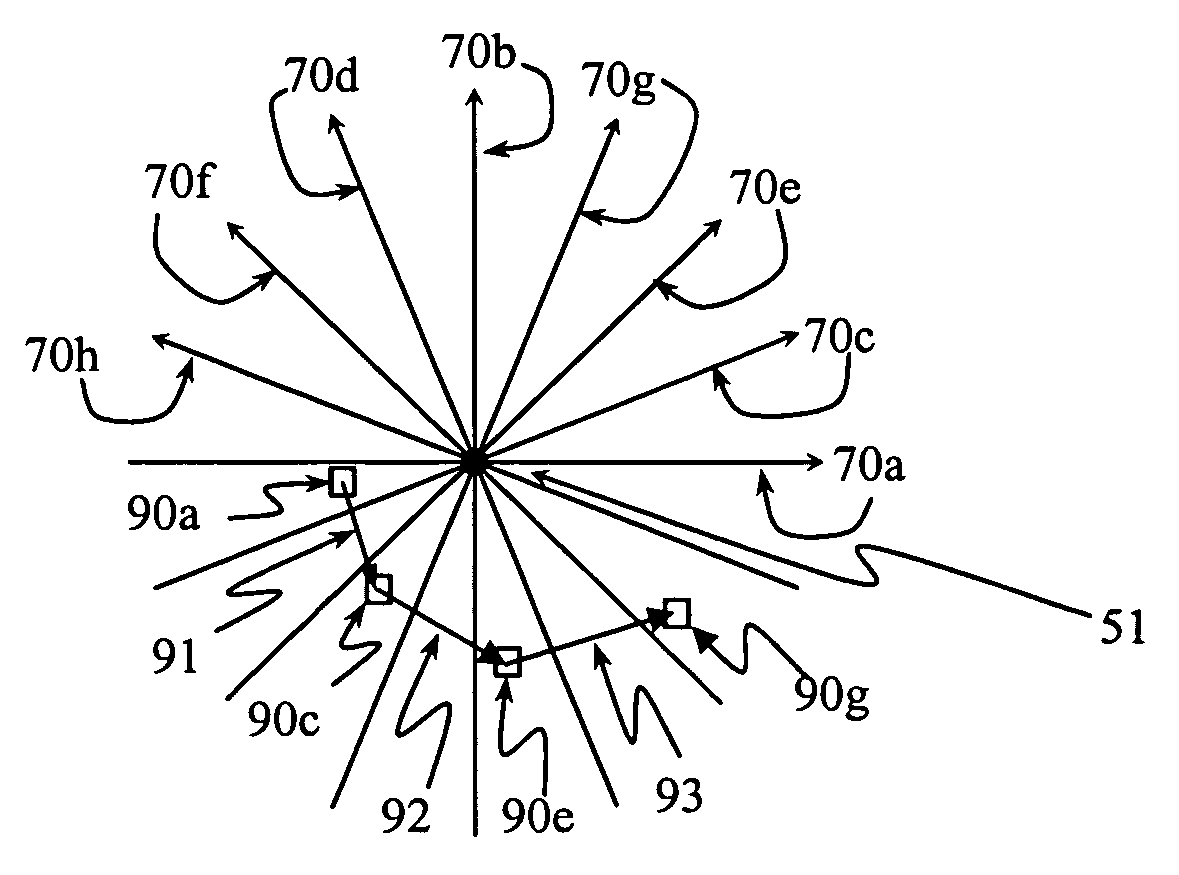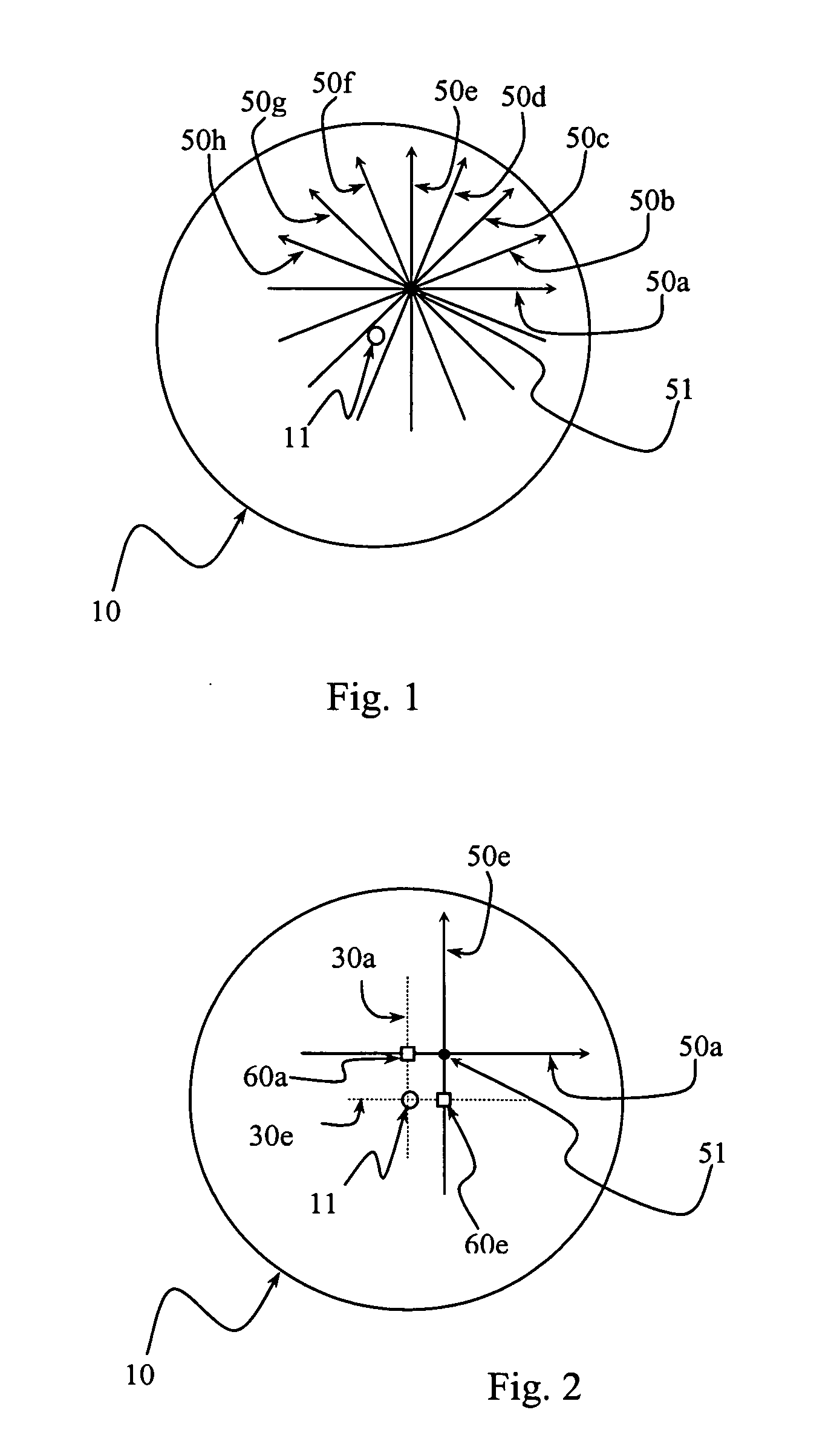Image adjustment derived from optical imaging measurement data
- Summary
- Abstract
- Description
- Claims
- Application Information
AI Technical Summary
Benefits of technology
Problems solved by technology
Method used
Image
Examples
Embodiment Construction
[0027]Anterior Chamber Optical Coherence Tomography (“AC-OCT”) is a state-of-art technology for anterior chamber imaging. AC-OCT can produce a corneal thickness map (Pachymetry map). The Pachymetry map is generally derived from a plurality of B-scans, though, there is no reason that this could not be derived from any sufficiently densely placed collection of scan lines. Most commonly, a B-scan is a collection of scan lines within a plane. A B-scan display is often called a tomogram. The tomogram is derived from measurement data in depth along scan lines and in breadth across the scan plane (the B-scan). AC-OCT measurement data is typically collected along scan lines, where the lines extend from the diagnostic instrument into the eye, with the lines collected across a plane (B-scan).
[0028]FIG. 1 illustrates, in projection, a typical AC-OCT scan pattern for measuring corneal thickness. This scan pattern is a fan of B-scans intersecting at a common center 51. For more uniform resolutio...
PUM
 Login to View More
Login to View More Abstract
Description
Claims
Application Information
 Login to View More
Login to View More - R&D
- Intellectual Property
- Life Sciences
- Materials
- Tech Scout
- Unparalleled Data Quality
- Higher Quality Content
- 60% Fewer Hallucinations
Browse by: Latest US Patents, China's latest patents, Technical Efficacy Thesaurus, Application Domain, Technology Topic, Popular Technical Reports.
© 2025 PatSnap. All rights reserved.Legal|Privacy policy|Modern Slavery Act Transparency Statement|Sitemap|About US| Contact US: help@patsnap.com



